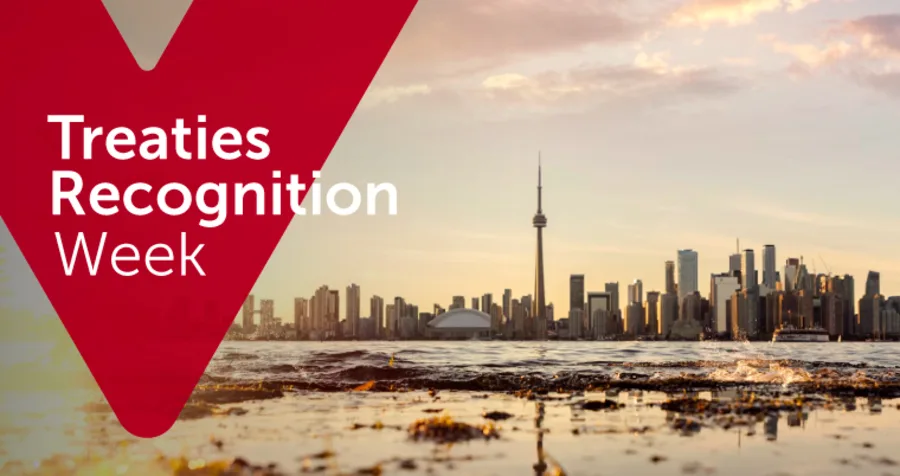Treaties Recognition Week: Understanding wampum belts and treaties

"Treaties are not about giving rights to Indigenous Peoples, but rather, they are about recognizing and affirming the rights that Indigenous Peoples already have." – Chief Wilton Littlechild
As we step into Treaties Recognition Week — November 5–11, 2023 — it's important to understand that this week isn't just a formality; it's a call to action. It reminds us of our collective responsibility to respect, honour, and uphold the sacred agreements made with Indigenous Peoples.
Wampum belts
Treaties were part of Turtle Island's history long before European contact. For example, the Haudenosaunee nations, including Seneca, Cayuga, Onondaga, Oneida, and Mohawk, had treaties among them, and the Hiawatha belt — a type of wampum belt— served as a powerful symbol of their unity. In its design, a central tree represents a peace treaty. From this symbolism, the phrase "bury the hatchet" originated with burying weapons and embracing peace.
Wampum belts are more than physical artifacts; they're living documents. Crafted from rare shells collected from the Eastern Seaboard, they signify the profound respect and significance of these agreements. They also aid the memory when telling stories to future generations. The colours used — white and blue or dark purple — convey deeper meanings. White symbolizes times of peace, and blue represents moments of conflict, especially in serious or political matters.
Wampum belts represent the essence of equal partnerships. They're often referred to as chains because they bind multiple parties in agreement and alliance. An essential part of these agreements is the commitment to gather periodically to ensure mutual benefit, a process known as polishing the chain or renewing the relationship. Wampum belts serve as a dynamic medium for preserving stories, forging agreements, and fostering understanding. Resistant to the elements, these portable artifacts have passed from generation to generation intact.
The importance of understanding treaties and their impact
Learning about treaties isn't just a history lesson; it's a crucial step in addressing the historical injustices that continue to affect Indigenous communities. It's an essential part of the path toward reconciliation and healing. When we listen to the voices of Indigenous community members, we gain a richer understanding of the cultural significance of these agreements.
A call to action
Treaties Recognition Week in Ontario is a compelling reminder that each of us has a role in the ongoing journey of reconciliation. When we acknowledge the importance of treaties, listen to the voices of Indigenous relations, and actively engage in the discourse, we're building a foundation for a more equitable and united future. We hope you will engage with the resources below this week and year-round.
Explore more on the topic of treaties
Actions
Events
Twice Colonized: Film Screening in Ajax (November 10)
Treaties Recognition Week/International Inuit Day: Virtual event from the Law Society of Ontario (November 7)
Weesageechak Begins to Dance: Festival with in-person and online presentations (November 6–19)
Renewing Our Treaty Relationships: Robinson Huron Waawiindamaagewin Treaties Week virtual events (November 8–9)
Reading
Treaties Week 2022: Recommended Watching and Reading from the Toronto Public Library
Treaties: Curated reading list by GoodMinds.com
Videos
A Dish with One Spoon Reconsidered, a conversation hosted by the Toronto Public Library
The Wampum Belt: A Nation to Nation Relationship, featuring Maurice Switzer via First Nations University
Treaty Recognition Week video, narrated by Tanya Talaga
Trick or Treaty, a documentary by Alanis Obomsawin
Lost in History — Treaty Making in Canada with Jean-Pierre Morin
The Underlying Importance of Wampum Belts, featuring Alan Ojiig Corbiere
Listening
They Know Not What They Do by Tara Beagan
Resources
A Treaty Guide for Torontonians from the Talking Treaties Collective
10 Treaty Facts by Indigenous Corporate Training Inc.
What’s the Difference between Historic and Modern Treaties? by Indigenous Corporate Training Inc.
Free courses
Durham College’s Indigenous Histories & Reconciliation modules
















